- Would you begin by giving us an introduction to 4Culture and what it does?
-
The predecessor of 4Culture, the King County Arts Commission (hereafter KCAC) was a public agency of the county. At the time when the National Endowment for the Arts (hereafter NEA) was encouraging all states, counties and cities in the US to establish arts commissions, King County established KCAC in 1967 as an agency to support the arts.
The agency grew gradually into the King County Department of Cultural Resources until 2001 when the economy forced cuts to our budget for programs such as art education courses by artists and support for capital projects. In 2003, we reorganized ourselves as an quasi-independent King County Public Development Authority and adopted the name 4Culture.
The name 4Culture implies the four areas of Art, Public Art, Heritage and Historic Preservation, and it also means “for culture.” The organization’s formal name is Cultural Development Authority of King County, but we primarily use 4Culture as an easy to remember nickname that helps us connect to people outside the county. One of the reasons we use this nickname is that we aim to be an organization in the public arena that connects to the world outside and builds mutually beneficial partnerships with people and organizations outside the arts sector.
4Culture’s operating budget is approximately $10 million and about $6 million of that is allotted as support for some 600 individuals and organizations in the three areas of Art, Heritage and Historic Preservation in King County. In the area of public art, we are involved in projects and consulting related to King County’s “One Percent for Art” act that designates one percent of the budgets for public building construction to accompanying public art. Through this program it has been possible to implement public art projects that add new tourist resources whenever there are construction projects in the areas of traffic infrastructure, waterworks, restoring run-down facilities, parks and buildings.
After going independent, 4Culture operates on funding from the State of Washington, but we are still primarily a cultural organization for King County. Becoming an independent Public Development Authority has given us more flexibility in our activities and the fact that we can now engage in projects that produce revenue has given us more freedom in the management of our finances. But the biggest difference we have experienced since becoming independent is in the way the public, the artists and the community view us. Before we were an agency of the county, but now our image has changed to one of an organization that is there to help the public in broader and more diverse ways. - You have been involved in the King County art scene for over 20 years, going back to your days at KCAC. Can you tell us about your education and career leading up to that?
-
I grew up on a farm in a small town near Pittsburgh, Pennsylvania and I studied writing and philosophy at Carnegie Mellon University in Pittsburgh. When I was in New York from 1976 to ’82, it was the most exciting of times in the art scene and the avant-garde film, theater and art I saw there opened my eyes to the arts. It was a period that changed my life.
I began in a job framing paintings and installing sculptures, and as I learned more I discovered theater. In the visual arts at the time, abstract and expressionist painting were the main styles and the works were mainly critical, political or social in nature. But in theater there was a movement known as collective theater that transcended genre of art form, and the works of companies in this movement like the Wooster Group and Richard Forman’s company appeared to me to be the newest of all. It was very interesting to see how the artists who became involved in this cross-over theater were able to pursue there own art within that context, and important cutting-edge artists like Peter Brook at the time were giving birth to completely unexpected art, all of which had a big impact on me.
After that I became a member of a theater company and did things like driving the company’s bus to performances around New York and the Massachusetts area. It was financially difficult to continue to working in the New York area, however, and that was one of the reasons that I decided to move to Seattle when I had the opportunity to participate in the launching of the New City Theater there. I worked there for the theater’s company for about five years, doing everything from performer, manager and director to handyman.
Then, one day I got a phone call from KCAC asking me to be the coordinator for a festival planned for 1987. It happened to be a time in my career when I was looking to move on to something new, and this job ended up being my first encounter with KCAC. Doing that festival turned out to be a very enjoyable experience. We introduced 21 works and most of them were site-specific works. This job led to more work for KCAC on a temporary basis, after which I worked with the National Endowment for the Arts and the Seattle Arts Commission before becoming a full-time KCAC employee in 1993. So, it has been 23 years now since my first involvement. - When you first moved to Seattle, how did the arts scene in King County appear to you?
-
After NEA funding was cut in 1990, it was no longer possible for artists to receive federal funding. Works that dealt especially with sexual or religious themes became highly political and were effectively censured in the public sector. But Seattle managed to avoid a lot of this controversy.
In a sense, King County was isolated and had a history of creating its own distinct arts and culture scene. Seattle was particularly unique for the fact that approximately 80% of the population is people who have moved there from other regions and it was a city that attracted corporations and individuals with the funds to support the arts and culture. For example, in the 1960s the city launched a “Best Opera” movement aimed at creating world-class opera. That led to the creation of top class ballet and opera companies, art museum and orchestra one after the other. The Pacific Northwest Ballet, Seattle Opera, Seattle Art Museum, Seattle Symphony and the Seattle Repertory Theatre were all founded over the course of several decades. Each of these organizations had multi-million dollar budgets thanks largely to large-scale support from wealthy families and corporations. Among the more notable benefactors are Boeing, Microsoft and the Paul G. Allen Family Foundation, and many of the theaters are named for family donors like these.
This large-scale support for the arts reached its peak in the 1980s and ’90s and continues today, despite some cut-backs due to the current recession. At 4Culture as well, we are able to provide support for some 250 arts organizations every year, and that is an exceptional number for an area the size of Seattle and King County. - One of the areas that 4Culture appears to concentrate efforts in is site-specific performance in public places, as evidenced by the fact that you launched your Site-Specific King County Performance Network in 2005. The 1987 KCAC festival that you served as coordinator for seems to be the origin of these efforts. What was that festival like? And was site-specific performance already a norm in King County at the time?
-
That festival was titled Performa ’87, a Festival of New Works launched with support from NEA and we commissioned a variety of new works and site specific performances on places like a floating barge, a city bus, or the county airport.. Renowned Seattle artist Pat Graney choreographed a work in a rural park for gymnasts on uneven parallel bars. The focus of this program was on supporting local artists to create original work here in Seattle and King County.
I don’t think we can call KCAC the pioneer of site-specific performance, the fact that KCAC placed a public value on empowering artists to create original work in non-traditional venues throughout the urban and rural areas was certainly innovative at the time. - What led 4Culture to begin its site-specific program?
-
4Culture works in partnership with 25 city arts commissions in King County, but most of the arts activities are centered in Seattle, which means that people in the outlying suburban areas have few opportunities to encounter the arts and there were very few theaters for performances like dance. With site-specific works, however, the artists can work anywhere, in parks, restaurants, shopping malls or on the streets. There are many artists in Seattle who do work through established venues like theaters or galleries. Through this program we began to discover many of these highly creative artists and encourage them to create work wherever they wanted to.
The first project we supported was one by the Seattle-based playwright and director Keri Healey in September of 2005. It was titled “The IKEA Cycle: Tiny Domestic Dramas” and it was performed at the IKEA showroom in the city of Renton. It used the bedroom, dining room and living room furniture display areas as its performance spaces and was a two-hour performance consisting of six scenes with stories, music and dance. For this project, 4Culture received the proposal from the artists and then aided in arranging the partnership with the people in charge at IKEA, and providing $8,000 in funding. (*) The most important things here are that the works be innovative and that they provide an encounter with the arts for people who don’t usually have such opportunities.
Site-specific works may require relatively little in terms of funding. One example of a site-specific project in the visual arts was one by Seattle artist Susan Robb cost just $200. It consisted of a 50-foot-high construction made completely of the plastic used for garbage bags. It was a wonderful work that changed form dramatically in response to natural changes in its environment. We believe that outdoor works like this in spaces unrestricted by ceilings or walls offer great potential for creativity.
(*) In Site-Specific King County Performance Network projects 4Culture can provide grants of up to $15,000 in addition to support in building the necessary partnerships with local organizations. - Although 4Culture support goes mainly to artists and companies based in King County, you also provided support for the first time this year for residencies for Zan Yamashita and Yukio Suzuki under Japan’s Offsite Dance Project. What was your reason for supporting foreign artists in this way, and what results do you hope for from such programs?
- Offsite Dance Project has an outstanding record of achievements in site-specific projects and I thought that we could build an exciting relationship together. Long years of focusing on the artists and arts organizations of King County has made it harder to know what is happening in other regions. Although as administrators we should always remain open in our work, there is a tendency to create limitations within our own process. In short, we create frameworks or boxes that it becomes difficult to get out of. So, every once in a while we need to break out of those confines and find new things. In the case of Offsite, there was a precedent in the partnerships it has established with arts organizations here in the US Northwest such as the Velocity Dance Center in Seattle and Portland, Oregon’s PICA, which organizes the TBA Festival. I thought that projects such as collaborations between Japanese choreographers and local artists here could provide new stimulus to the King County arts community.
- Thanks to your support Zan Yamashita was able to work for three weeks and Yukio Suzuki for one week with Seattle artists at Velocity on creation of works and were able to participate in the TBA Festival with site-specific works. They were also able to participate in workshops and performances with Seattle choreographers and outreach programs at elementary schools, so it seems they were able to give back something to the Seattle community in response to 4Culture’s support.
- That was very good. And I think of the support this time as just the beginning. I am looking forward to more things in the future.
- You have been working in the King County arts scene for over 20 years. Can you tell us frankly what you think of the state of contemporary performing arts today?
-
I feel that the quality of growth has changed since the ’90s. Despite the growth in high-tech businesses in the area and the growth of people in the local population who are knowledgeable in law, politics and business and conscious of culture, in contrast the arts seem to be stuck inside a box of its own. They can’t seem to break out of the conventional style where an audience gathers in a specific place to watch performances and I feel that in a larger sense they are not connecting to the broader public and are thus losing ways to develop and grow creatively.
I have just mentioned boxes, but by that term I don’t mean the theater as a form of box. I mean the traditional styles and forms of arts that the performing arts professionals of King County have constructed over the years. Our media driven culture is full of 2-dimensional stimulation and most formal theater venues mimic this passive audience relationship.
The stage of a theater may have a 3-dimensional space, but I feel that there is a need to break out of the theater environment with its clear stage-audience relationship, go beyond that barrier and perform in new types of 3-dimensional art environments. - Do other professionals in the performing arts share your feeling that they are limited by conventional frameworks?
- I think everyone is looking for change, but I don’t think that they are creating things that break out of those frameworks. But, I believe that change is happening. The more we break down the barriers between organizations, between artists, and between art and the public, the faster and more real the change becomes as people begin to see the possibilities. And the more they see, the more their imaginations become active and take them in new directions.
- Could you give us some specific examples of programs with new directions that you are pursuing? And, do you see any other signs of this kind of change in King County today?
-
One of these is the Site-Specific King County Performance Network I mentioned earlier. Also, in 2010 we have begun a new “Storefronts Seattle” project. This is a project that seeks to create partnerships with the City of Seattle, businesses and communities to convert vacant storefronts in the downtown area for use as arts spaces. These spaces are now being used for art installations, performances and as rehearsal studio spaces. This project enables us to provide artists with spaces to work in, and although they don’t provide revenue for developers as rental spaces and such, they do serve as places for people to gather, which is very meaningful as a project. This is something that was unthinkable ten years ago and I believe that it is evidence of new change in a time when we now have artists and communities that want to try to do something new.
You can read some of the movements taking place in King County from the numbers. There are more artists and there are more citizens providing financial support. As for all the local arts commissions that 4Culture works in partnership with, for a long time everyone wanted the same things, but recently there are more commissions that want works that fit their unique localities and environments. Some cities in the county are showing that they are willing to take risks to do things that are interesting, and they are working with local developers and businesspeople to promote such projects.
For example, the arts commission of the city of Redmond where the Microsoft headquarters is located has initiated a movement in which high-tech designers and artists collaborate to create new types of media art using the road connecting Redmond to the neighboring town of Bellevue. Also, there is a project called B/IAS supported by the arts commission of Burien. This was an event in which artists gained access to a large undeveloped parking lot for a year to create a sculpture garden. I think this is another case showing that the public and the artists have become more open to new things than in the past. - Indeed, when I talk to young Seattle artists they are telling me about their performance on the weekend in the park or their show at some club or some experimental piece they are doing at their studio or something using a movie theater. It is clear that they are trying out lots of new inexpensive and accessible venues outside the conventional theater work.
-
Artists are looking for all kinds of new opportunities together with their fellow artists. I believe that it is very meaningful if 4Culture can help provide opportunities for these artists. In the past ten years I think we have seen a new generation of artists come up who work together with their fellow artists to create things without depending on grants or funding support. The important thing is that the artists have their own community and that they are developing.
Artists exercise their imaginations more than most people and they have appeal that brings people together and respond to situations with flexibility, and that is why the most dangerous thing is to try to stifle these inherent strengths. When artists enter the communities, their honest feelings, thoughts and actions can lead to new collaborations, communication and partnerships.
I think that one of the strengths of 4Culture is that we never just say no. We try to say yes, there must be a way. That comes from my belief that there is never just one answer but always a variety of possibilities. That is why I value and support the creative process as much as the goal of production. - The artists praise you because you always encourage them by saying, “We can do it!” (Laughs) Is that also the philosophy of 4Culture?
-
I think sometimes in the arts we tend to focus too much on good management and not enough on artistic personality and vision. Every artist and organization has their own approach and method for doing what they do. It is important for us as administrators to be able to support the differences. We have to recognize that the individual personality is a critical part of the equation and empower that. It is not easy, but it helps make the best art happen.
In order for the arts to develop and progress you need training institutions, you need small, young organizations as well and large established ones, you need funding and advocacy, spaces for creating works and affordable places to live. All these things are necessary, and unless a lot of people know this and want this, we will not be able to change society for the better. My job and the job of 4Culture is to provide the support in all areas to help make that happen.
Charlie Rathbun
Changing Washington State’s King County
The 4Culture experiment

Charlie Rathbun
Art program director of 4Culture
King County in the state of Washington is a county containing the city of Seattle and 37 other cities with a combined population of 1.9 million. The commission entitled with the job of promoting culture in this county is named 4Culture (formerly the King County Arts Commission/KCAC) established in 2003.
4Culture
Address:
101 Prefontaine Place South
Seattle, WA, USA
Tel: +1-206-296-7580
Fax: +1-206-296-8629
E-mail:
info[a]4culture.org
URL:
https://www.4culture.org/
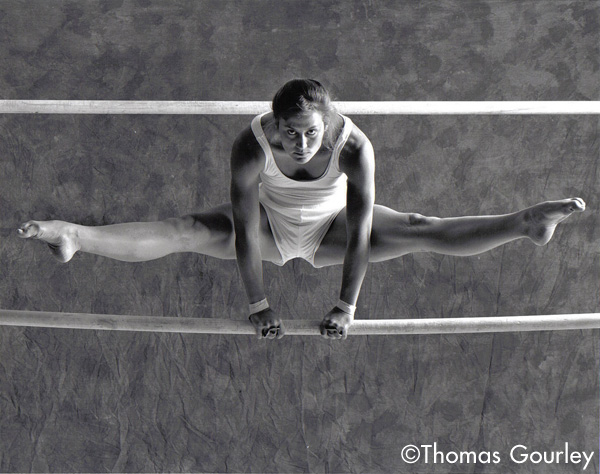
Seven Uneven 1987
A site-specific dance work by Pat Graney performed at the 1987 KCAC festival for which Charlie Rathbun served as coordinator.
Photo: Thomas Gourley
http://www.patgraney.org/performances
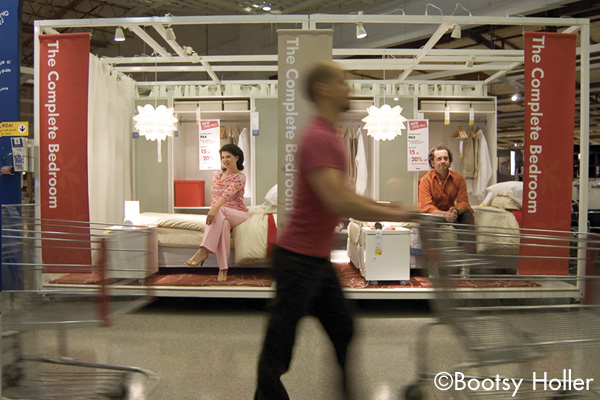
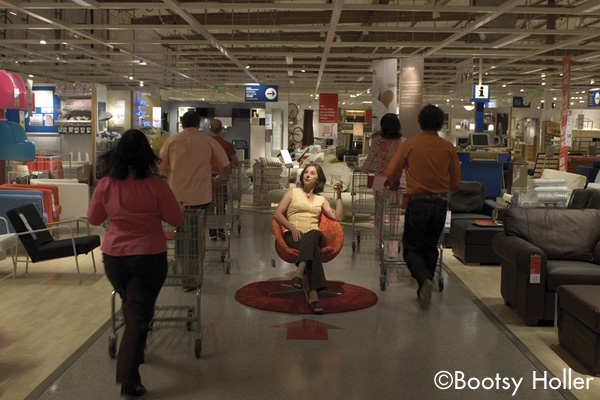
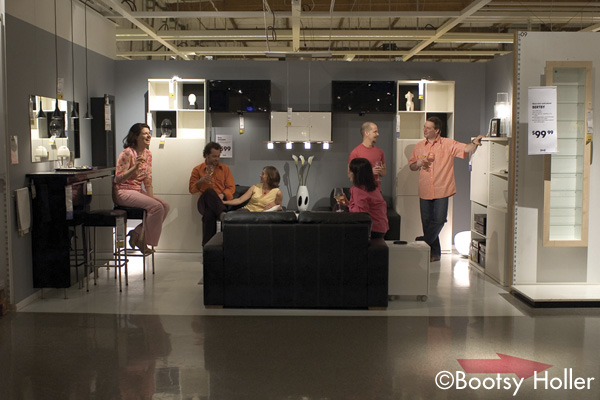
The IKEA Cycle: Tiny Domestic Dramas
A production supported by 4Culture’s site-specific program that was performed in the Renton’s IKEA store in September 2005. Since then, the partnership between the artists and IKEA has made this an ongoing project with repeat performances and new works for children, as well as performances at IKEA stores in other cities.
Photo: Bootsy Holler

Seattle contemporary artist Susan Robb created this installation with plastic bags
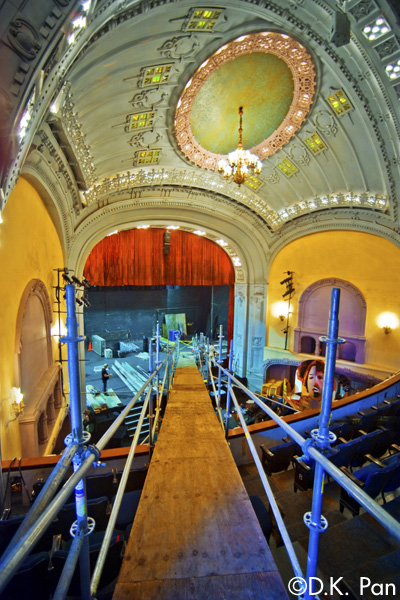
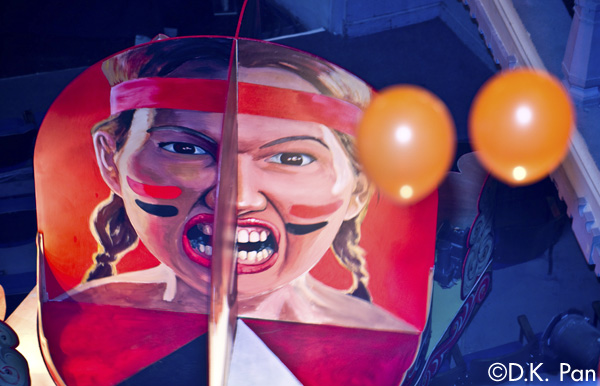
Moore Theatre Site Specific 2009 “Inside Out”
Under its site specific art program, 4Culture provided support for this community program by one of King County’s major arts organizations, Seattle Theatre Group. In a program curated by Free Sheep Foundation, more than 50 up-and-coming artists and performers presented site-specific works in sites around the Moore Theatre built in 1907.
Photo: D.K. Pan
https://www.stgpresents.org/
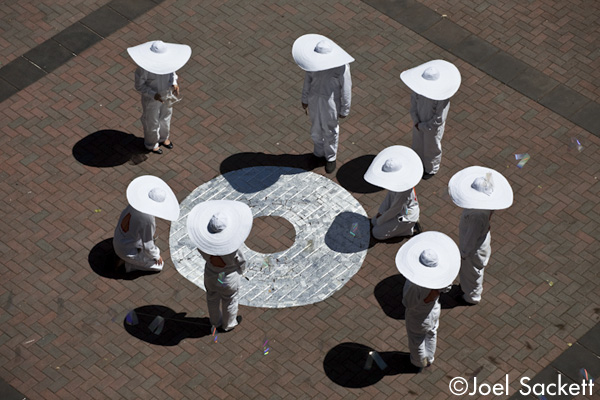
City Meditation Crew 2010
Radiant Silver Circle
In a partnership with the Seattle Parks & Recreation authority that administrates activities in the city’s parks, 4Culture provides support for free site-specific events in three parks in central Seattle held under the “artSparks” grant program launched 2009. This project by Anne Beffel provides moments for meditation in peoples’ busy contemporary lives.
Photo: Joel Sackett
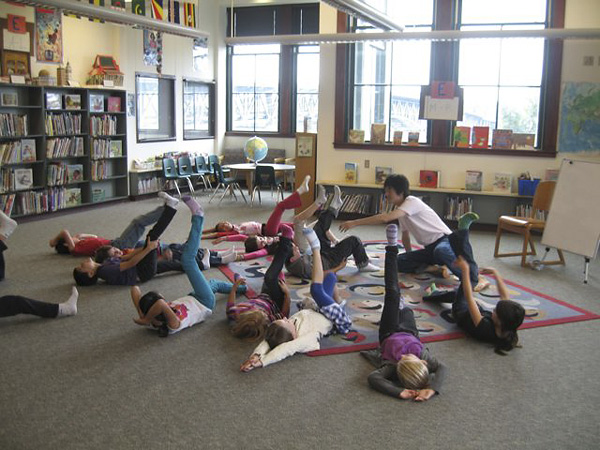
Zan Yamashita Workshop
While in Seattle on a residency supported by 4Culture in September 2010, Zan Yamashita performed with a Seattle dancer, Ezra Dickinson at Seattle’s John Stanford International School. This school is the first in Seattle to adopt a foreign language curriculum. The workshop was held in Japanese for 4th and 5th graders studying Japanese. This workshop was made possible with support from the City of Seattle (Seattle Mayor’s Office of Arts and Cultural Affairs).
Related Tags

